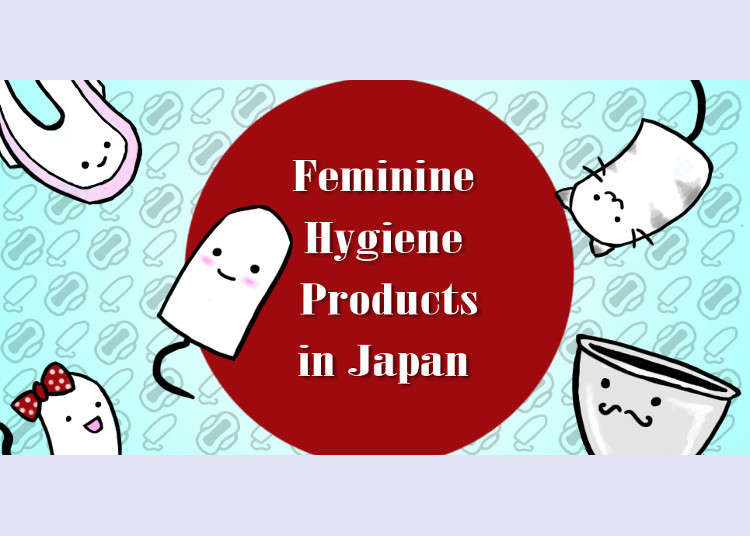
The Perfect Guide to Menstrual Products in Japan
- Written by: Pamela Drobig
Whether you're at home, in school, at work, or travelling in and around Japan - a period does not care about one’s whereabouts. So, knowing how to handle your flow, no matter where you are, is a very important thing. While most people don’t travel unprepared, one’s menstrual product of choice might be stowed away in the suitcase at the hotel room when the period strikes, or it is simply an unexpected one. In those cases, you need to know what to buy and where to buy, a task than can seem rather intimidating when confronted with reading the Japanese on the usually familiar menstrual products.
To provide an overview of the different products and their names in Japanese, let’s take a look at different means of handling one’s period stress-free while in Japan.
Sanitary Pads: napukin (ナプキン)
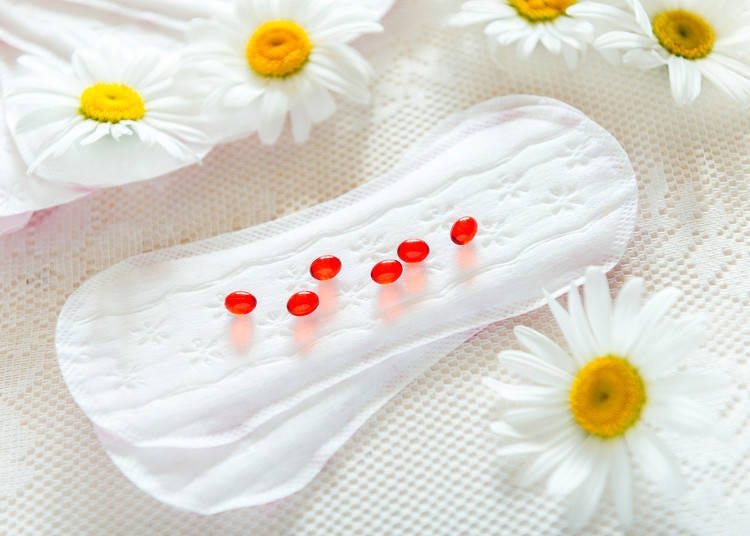
This is definitely the Number One product in Japan when it comes to monthlies. Sanitary pads unarguably have the broadest variety of brands and shapes, which makes it a little hard to choose one when standing in front of them in a drugstore. Japanese pads are no different from what you’re likely used to. The feminine products aisle of a Japanese drugstore will be predominantly filled with sanitary pads in various sizes and shapes.
So, what to buy? Most brands favor an easy-to-understand package design, making it easy to get an idea of what kind of pad you are looking at, even without knowing Japanese. The shape and length of the pad is directly printed on the package - the stronger your flow, the further on the right the highlighted pad will be. Some brands even include relatively detailed information in English on their packaging. However, images alone will likely not cover all the information you need, so let’s take a look at relevant vocabulary to navigate Japanese sanitary pads:
- ...用 (...yō)
- use
- 昼用 (hiruyō)
- day use
- 夜用 (yoruyō)
- night use
- ふつう用 (futsūyō)
- regular flow
- 多い日 (ōi hi)
- heavy flow
- 軽い日 (karui hi)
- light flow
- 超 (chō)
- super (as in very heavy flow)
- 羽つき (hane tsuki)
- with wings
- 羽なし (hane nashi)
- without wings
- ライナー (rainā)
- liner
Certain stores in Japan also have sample pads dangling from the shelves from time to time, letting customers see and feel the pad in question.
Tampons: tanpon (タンポン)

You have your choice of tampons in Japan, but compared to the variety of pads you can get, the tampon corner is smaller. Nonetheless, they come in different sizes and variations, such as light (ライト), regular (レギュラー), and super (スーパー). Super plus tampons (スーパープラス) are also available.
Tampons without applicators may be harder to come by but the workaround for everyone who does not want to use the insertion stick is to simply push the tampon out and dispose of the applicator.
Both pads and tampons are also sold at convenience stores and most supermarkets. If you have a hard time navigating the aisles, do not hesitate to ask the staff with the help of the provided vocabulary.
Alternatives to Pads and Tampons in Japan

Tampons and pads aren't the be-all and end-all when it comes to menstruation. In Japan, however, they are the two methods most commonly used and sold, and thus the easiest to find. Nonetheless, alternatives do exist in Japan and can easily be found at various online shops or ordered directly from the manufacturer.
Menstrual Cup: gekkei kappu (月経カップ)

A menstrual cup is a silicone cup that is inserted like a tampon, but instead of soaking up the menses, it simply contains them. It can be left in for up to 12 convenient hours. The benefits of a menstrual cup is that is keeps you from drying out and significantly reduces bacteria - and it can be used over and over again for up to two years. In Japan, menstrual cups are sold at various online shops.
Menstrual Sponge: suponji tanpon (スポンジタンポン)
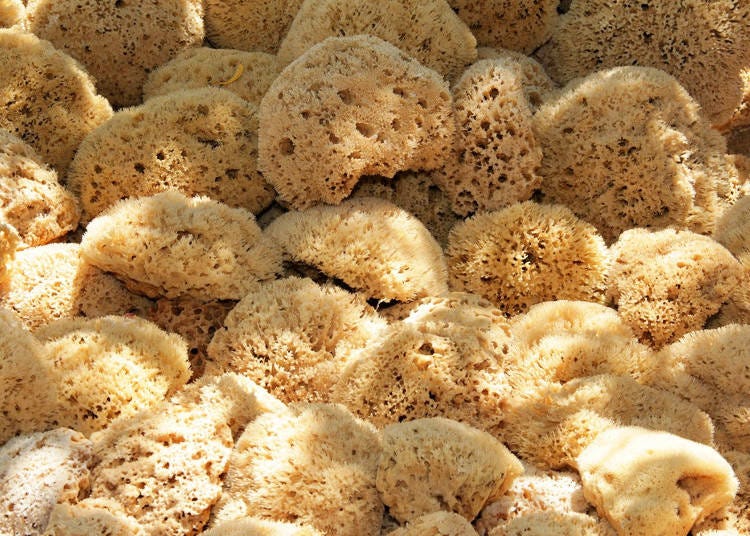
Menstrual sponges or natural sponges are basically reusable tampons in the form of natural sponges, as the name suggests. As they are naturally occurring organisms, menstrual sponges usually come in different shapes and sizes and can be cut down to your individual size.
A menstrual sponge is used like a tampon but it does not feature a string and is instead removed with one’s fingers. After being rinsed out thoroughly with water, it can be re-inserted and used for generally up to six months. Unwaxed dental floss can be threaded through a sponge’s center and knotted tight to help with the removal.
In Japan, menstrual sponges are rather rare to come by, but large online shops have different brands in stock.
Washable Pads: nuno napukin (布ナプキン)
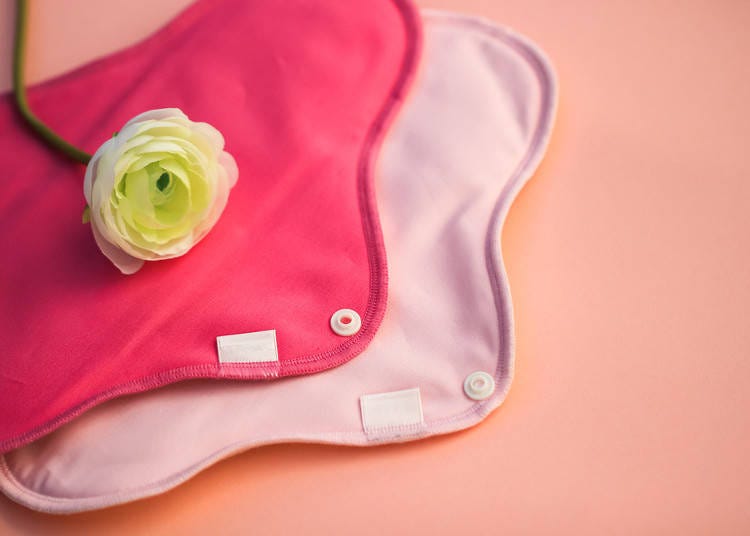
Due to the high popularity of pads in Japan, washable pads are very common and a nice alternative to the disposable ones and are generally sold in sets. Various manufacturers offer washable pads in all kinds of shapes and designs, from plain and classic to playful and adorable, from overnight use to panty liner.
Being used like regular pads, washable pads aren’t thrown away after one use but rather soaked and washed for reuse. Lightly stained pads can be added to one’s usual laundry while those for the heavy flow days need to be pre-rinsed to get rid of any stains. On top of handling one’s menstruation, these cloth pads are also fit for people with light incontinence. If properly cared for, washable pads last up to five years.
In Japan, washable pads can be found at basically any online store dealing in hygiene products and even in well-sorted drugstores and other shops.
Dealing with the Period in Japan: Painkillers

Apart from the actual menstruation, periods tend to come with all kinds of symptoms varying from person by person. Cramps, headaches, and the likes are among the most common hassles to deal with during the time of the month. Finding medicine such as painkillers in Japan is not hard at all, if you know what to look for and where to find it.
Japanese drug stores and pharmacies offer a variety of over-the-counter nonsteroidal anti-inflammatory drugs, such as Bufferin, Eve, Meridon, and so on, which are go-to products for many a cramp-plagued person. As for heavy cramps, a drug called Loxonin is a preferred choice of many, while L-Pain Kowa is also a long-established Japanese product. Specifically asking for medicine, such as ibuprofen, will also make it much easier to navigate the many varieties:
- イブプロフェン (ibupurofen)
- ibuprofen
- ロキソプロフェン (rokisopurofen)
- loxoprofen
- ナプロキセン (napurokisen)
- naproxen
- 月経痙攣 (gekkei keiren)
- menstrual cramps
- 月経痛 (gekkei tsū)
- menstrual pain
- 月経前症候群 (gekkeizen shōgōgun)
- PMS (premenstrual syndrome)
- 痛み (itami)
- pain
- 用法 (yōhō)
- direction of use
- 用量 (yōryō)
- dosage
Dealing with Periods in Japan: Tips & Tricks
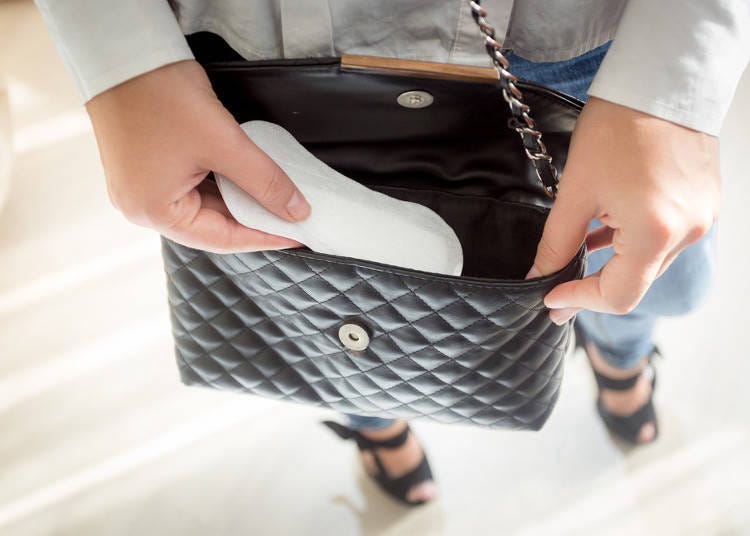
With basic knowledge of Japan’s menstrual products and helpful painkillers, there’s no need to be insecure about handling one’s period confidently and without much hassle. Besides these basics, however, Japan offers a lot of gadgets and things to make the entire thing as comfortable as possible.
Toilets and Washlets
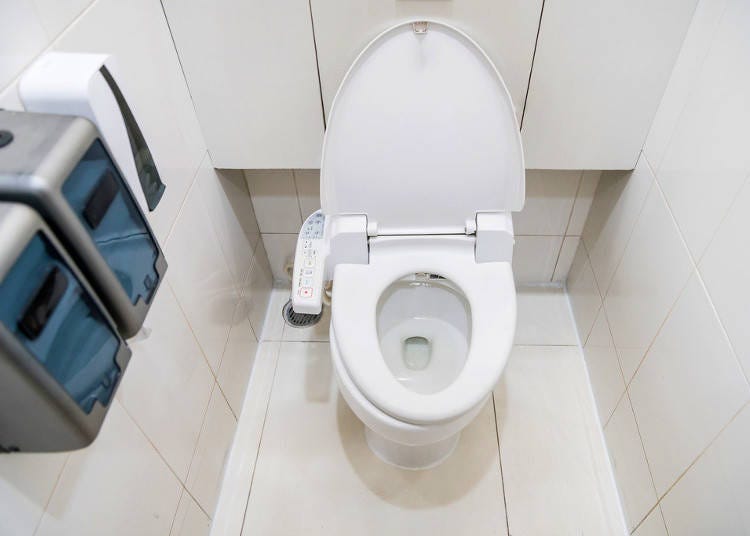
Generally, public toilets in Japan are free of charge and easy to find. Next to train stations, certain convenience stores and supermarkets offer public toilets, as well as department stores and hotel lobbies. Especially at the latter two examples, toilets are equipped with so-called washlets (a registered trademark of the company TOTO).
Those installations do not only heat the toilet seat for you but also feature a cleaning nozzle with a bidet function - it’s the button with a (pink) figure sitting on a toilet. Do not hesitate to make use of the Japanese washlet for that wonderful feeling of freshness!
Kairo Heat Packs Keep you Warm
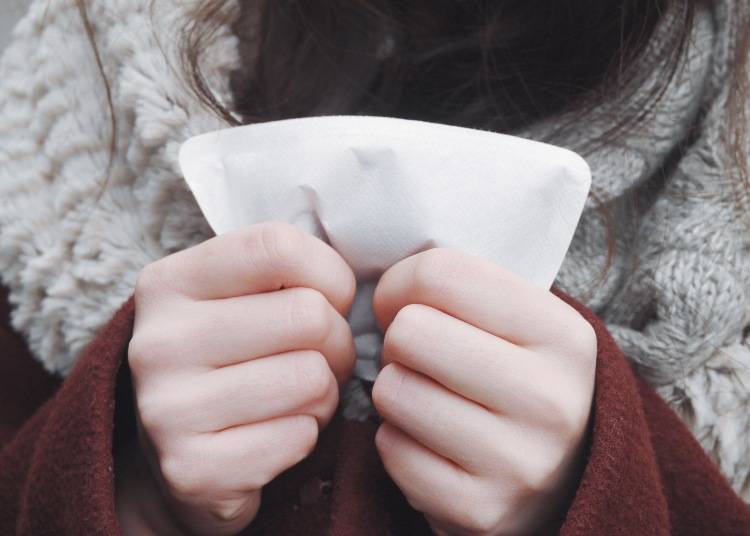
Japan has its own version of all-around heat packs called kairo, which literally translates to “fire inside a pocket.” These heat packs come in various versions, from the classic handheld bags to adhesive packs that can be attached to your clothes, effectively working like a hot water bottle. Ergonomically shaped and in different sizes, kairo are commonly used in winter but available at drugstores throughout the year - and are sure to soothe a raging womb with pleasant warmth.
Having learned all the basics about handling your periods in Japan, you can put your mind at ease even if the red dot decides to show up in the middle of the trip - it is still guaranteed to become a wonderful one!
Having graduated in Japanese Studies in Berlin, she returned to Japan in 2014. She focuses on writing and translations from Japanese to English, contemporary culture and society, as well as history and lore of Japan.
- Category
*Prices and options mentioned are subject to change.
*Unless stated otherwise, all prices include tax.
Popular Tours & Activitiess
Recommended places for you
-
Goods

Yoshida Gennojo-Roho Kyoto Buddhist Altars
Gift Shops
Nijo Castle, Kyoto Imperial Palace
-

Kambei Sannomiyahonten
Yakiniku
Kobe, Sannomiya, Kitano
-
Goods
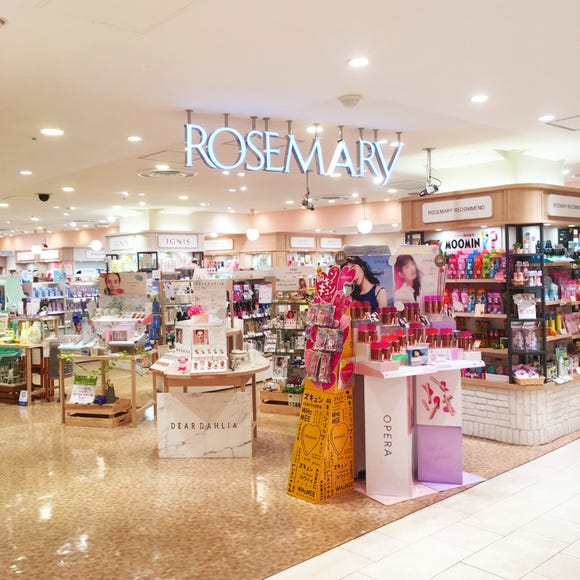
ROSEMARY Ikebukuro PARCO
Pharmacies
Ikebukuro
-
Appealing

Rukku and Uohei
Izakaya
Sapporo / Chitose
-
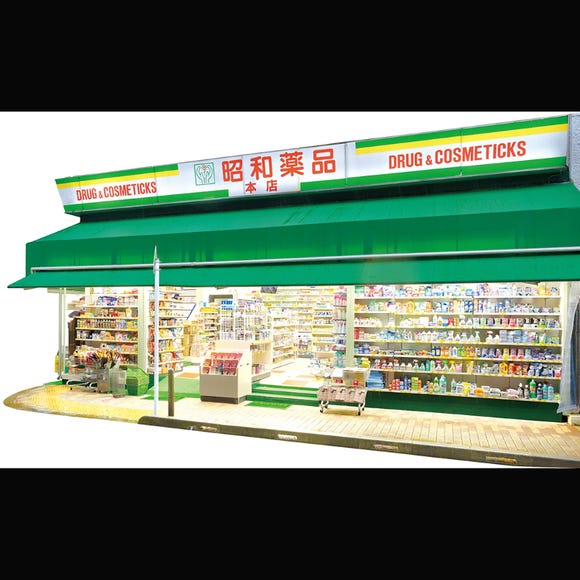
SYOUWA YAKUHIN KANDA-NISHIGUCHI
Pharmacies
Akihabara
-
Appealing

The Cosmetic Terrace DressCode Lumine Shinjuku branch
Pharmacies
Shinjuku
-

A Travel Game Changer! Go Hands-Free Between Tokyo and Kyoto with LUGGAGE EXPRESS by JTB and JR Tokai
by: Guest Contributor
-

Enjoy Japan's Gorgeous Winter Lights! Ride the Romancecar to Shonan no Hoseki Illumination
by: Guest Contributor
-

Keisei × Keikyu 16-Temple Goshuin Tour: Discover Deeper Tokyo & Yokohama
by: Guest Contributor
-

Tokyo City Pass Upgrade: Harry Potter Studio Tour & Top Sights up to 85% Off
by: Guest Contributor
-

The Best Japanese Food Representing 2025! 'Dish of the Year®' Annual Award Results Announced
-

Don't Miss Out! The One Thing You Must Do Before Shopping at Mitsui Shopping Park LaLaport: Get Your Max 10% OFF Coupon Book
-

Editors Recommend: Top Japanese Beauty and Snack Goods from Ginza's Famous Pharmacy!
-

Tokyo Station Top 10 Sweets Ranking!
-

16 Secrets About Mt. Fuji, the Symbol of Japan: Even Japanese People Don’t Know That?!
-

Why Tsuruha?! Reasons Why Tourists Love Japan’s Tsuruha Drug Store
-

Japanese Insect Repellent for Adults and Kids – Drugstore Staff Recommend Gentle and Effective Products
by: Cassandra Lord
-

5 Best Hotels Near Universal Studios Japan (Osaka): Top-Rated Places to Stay
by: WESTPLAN
- #best sushi japan
- #what to do in odaiba
- #what to bring to japan
- #new years in tokyo
- #best ramen japan
- #what to buy in ameyoko
- #japanese nail trends
- #things to do japan
- #onsen tattoo friendly tokyo
- #daiso
- #best coffee japan
- #best japanese soft drinks
- #best yakiniku japan
- #japanese fashion culture
- #japanese convenience store snacks













